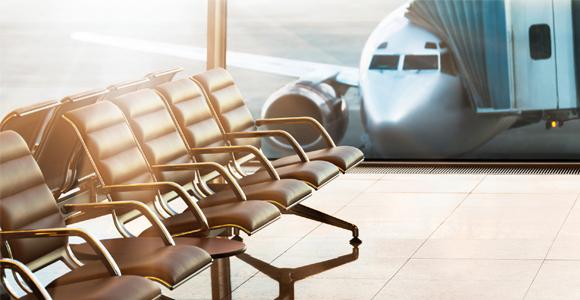FlyerTalk Exclusive: A4A Explains Why It Opposes Raising PFCs, Calls Airports’ Funding Solution a “Lose-Lose” & “Completely Wrong”

While all parties involved agree that improving airports should be a top priority for American travel infrastructure, industry groups are torn on how to go about funding their improvements.
With the anticipated increase in air passenger traffic over the next two years, airports and airlines are at odds on determining the best way to fund future facility improvement projects. According to a 2013 IATA report, U.S. airports will see an increase of 70 million passengers by 2017. In order to accommodate this imminent increase, airports across the country claim they need to improve their facilities.
One solution being considered by Congress and the FAA is increasing the Passenger Facility Charge (PFC) that’s added to every ticket. Currently, PFCs are limited to $4.50 per flight, capped at $9 per one-way itinerary or $18 per round trip. Under a plan backed by AirportsUnited — a joint venture of Airports Council International – North America (ACI-NA) and the American Association of Airport Executives (AAAE) — the PFC cap would be increased to a total of $8.50 per flight and adjusted from time to time in order to offset inflation.

“PFC revenue is higher now than when [Congress] last raised it. Airport revenue is up far higher than inflation,” Sean Kennedy, senior vice president of global government affairs at A4A, told FlyerTalk. “What [the airports] want is to get even more money solely on the backs of air travelers. This is a lose-lose for airlines and the passengers we serve.”
According to estimates by A4A, the proposed PFC increase would generate an additional $2.8 billion per year for the 358 airports collecting these fees across the U.S. These fees would be collected in addition to the $2.87 billion currently estimated to be collected in the 2015 fiscal year.
A4A argues that the additional costs, passed down from airports to passengers, could hurt future projections of air traffic. Kennedy used a hypothetical family of four as an example to support this argument, noting that a cross-country trip could end up costing them an additional $64 if PCSs go up. “For those working families that are deciding whether they should do a staycation or fly … that $64 is not an insignificant cost.”
The assertion that air traffic may suffer as a result of an increased PFC is something that congressional decision makers are well aware of. In a U.S. Government Accountability Office (GAO) report to Congress, the federal nonpartisan watchdog group warned that although the PFC increase would increase funding available to airports, traveler growth could be stunted, thereby resulting in a decrease in funding for the Airport and Airway Trust Fund that the FAA uses to finance airport and airway system investments. The GAO’s report also noted a gap in auditing the hand-off of PFC funds from airlines, which collect the fees at the point of sale, to airports.
According to
“By any metric, airports have the best balance sheets of any mode of transportation right now,” said Kennedy. “Passengers are paying near record amounts, airlines are paying near record amounts, and [the airports] are making near record amounts from non-airline sources as well.”
In a press release issued earlier this month, A4A insisted that finding the funds to complete such projects is not a problem. A portion of the release read:
“There isn’t a crisis in airport funding. U.S. airport revenues grew 52 percent on a per passenger basis from 2000-2013, far exceeding inflation,”said A4A President and CEO Nicholas E. Calio. “Airports already have more than $11 billion in unrestricted cash and investments, which would allow them to operate for nearly a year without new funds.”
A4A says the ambitious infrastructure improvements planned across the nation should instead be funded by airport budget appropriations, drawing from the Airport Improvement Program and Airport and Airway Trust Fund, as well as utilizing the bond marketplace.
However, airports claim that the bond market adds unnecessary costs to the funding of improvement projects. According to a fact sheet published by ACI-NA, private activity bonds utilized by airports may be subject to Alternative Minimum Tax, which raises the total cost of improvement projects. In order to be a viable option, ACI-NA says these bonds would need to have lowered borrowing costs and be free of Alternative Minimum Tax.
While both sides agree that a funding solution needs to be found before passenger traffic outgrows airport capacity, they seem unable to agree on what the best method is — with airports arguing for fees and airlines pressuring them not to place the burden on the consumer.
“Over the last six years, airlines have invested $70 billion in airport capital improvement projects at the nation’s largest 30 airports,” Kennedy told FlyerTalk. “We are great partners with [the airports], but on the issue of raising PFCs on passengers, they are completely wrong.”
[Photos: iStock]
























Increase the PFC to pay for baggage system upgrades? I pay the airlines for baggage. If they need to upgrade the system at the airport, the airlines should pay for it. it's not like baggage service is a public good - it's an a la cart service just like an exit row seat.